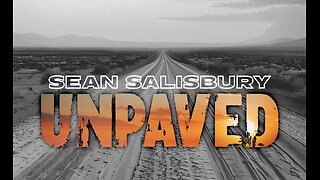Premium Only Content

Freediving down to a beautiful sea slug in the tropical Philippines waters.
Freediving down to a beautiful sea slug in the tropical Philippines waters. Freediving is an exhilarating way to explore the underwater world, offering a sense of freedom and connection with nature that is hard to match. Picture yourself taking a deep breath and diving into the crystal-clear waters of a tropical ocean. Among the myriad of marine creatures, your eyes are drawn to a small, but stunningly beautiful sea slug, also known as a nudibranch, gracefully gliding across a bed of coral.
Nudibranchs are some of the ocean's most captivating inhabitants, with their vivid hues and intricate patterns that can rival the most exquisite works of art. Each species is unique, and their colors can range from bright blues and yellows to deep reds and purples, often with striking contrasts and detailed markings. These tiny creatures, typically only a few centimeters long, are not just pretty to look at; they play an important role in the marine ecosystem, contributing to the health of coral reefs by grazing on algae and other small organisms.
As you hover near the sea slug, you can appreciate the delicate movements of its soft body and the way it seems to dance through the water. Freediving allows you to witness such moments in a way that feels intimate and personal, free from the noise and bubbles of scuba gear. It's a reminder of the incredible diversity and beauty of marine life, and the importance of preserving these underwater habitats for future generations to enjoy. The experience of encountering a beautiful sea slug on a freedive is a testament to the wonders that await beneath the waves, waiting to be discovered by those willing to take the plunge.
Huge Thank You to our guide Jeano Llubit
https://www.facebook.com/jeano.llubit.5
#seaslug
#nudibranch
#freediving
#tropicalparadise
#tropicalfish
#cute
#livingcoral
#corals
#snorkeling
#snorkelingadventure
#snorkelingtrip
#underwaterlife
#lifeinthephilippines
#gopro12
#underwaterlife
-
 LIVE
LIVE
Dr Disrespect
5 hours ago🔴LIVE - DR DISRESPECT - GEARS RELOADED GLOBAL LAUNCH - CRUSHING LOCUST
2,539 watching -
 UPCOMING
UPCOMING
Sarah Westall
38 minutes agoIt’s Big Big Money – Trafficking People is Intertwined in Business & Politics w/ Natly Denise
-
 LIVE
LIVE
LFA TV
10 hours agoLFA TV ALL DAY STREAM - TUESDAY 8/26/25
1,761 watching -
 1:49:34
1:49:34
The Quartering
3 hours agoToday's Breaking News With Melonie Mac & Hannah Claire Brimlow!
134K150 -
 23:16
23:16
Jasmin Laine
1 hour agoCarney HUMILIATED by German Reporter—CTV Host Laughs as Liberals Get DESTROYED on Air
2.67K5 -
 LIVE
LIVE
The HotSeat
1 hour agoLisa Cook Blocks Your Mortgage Relief While Committing Mortgage Fraud – YOU’RE FIRED!
558 watching -
 LIVE
LIVE
The Tom Renz Show
1 hour agoJudges Are Completely Immune From Lawsuits
93 watching -
 1:18:46
1:18:46
Awaken With JP
2 hours agoCracker Barrel Makes Brilliant Decision, Trump Bans Flag Burning and More - LIES Ep 105
41.4K15 -
 29:24
29:24
Stephen Gardner
1 hour ago🔥Trump PISSED! I can’t BELIEVE they did this!
9.65K18 -
 1:06:37
1:06:37
Sean Unpaved
4 hours agoCincinnati's Sack King Stays: Decoding the Deal & the NFL's Open-Ended Questions
38.2K